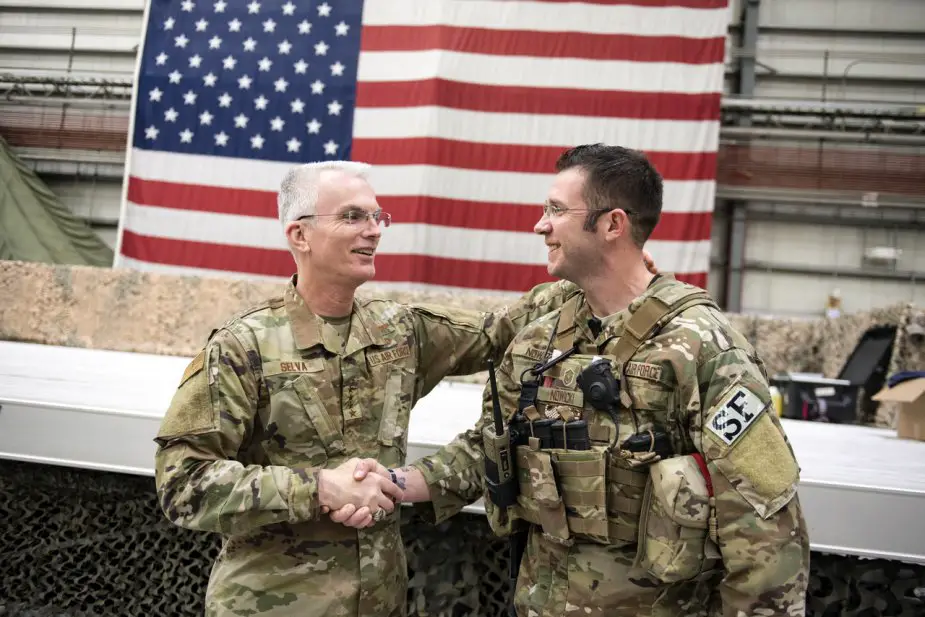Vice Chairman of U.S. Joint Chiefs of Staff stresses realities of strategic nuclear deterrence
Last week, Air Force Gen. Paul J. Selva delivered a keynote speech at a Strategic Deterrent Coalition symposium in Arlington, Virginia: Americans need to understand the strategic reasoning behind the U.S. nuclear triad and what those capabilities mean to the nation and the world, the vice chairman of the Joint Chiefs of Staff said.

Air Force General Paul J. Selva, Vice Chairman of the Joint Chiefs of Staff (left) (Picture source: US DoD)
Russian President Vladimir Putin attempted in a speech about a year ago to frighten the world with new classes and types of nuclear weapons, Gen. Selva recalled. "He revealed the existence of a nuclear-powered cruise missile. He revealed the existence of a special type of ballistic missile that has the range to go southward and not northward, and - in his own words - in an effort to defeat the defenses of the United States."
America’s backstop to these nuclear threats remains the nuclear triad of land-based missiles, manned bombers, and submarine-launched missiles. The deployed nuclear forces would reply to any threat or use of nuclear weapons against the United States or its allies. "It’s the reason we have a robust triad. It’s interesting to hear the debates about whether or not our triad is affordable," Gen. Selva said. "That’s not a strategic conversation; that’s a tactical conversation. The strategic conversation is ‘What does the triad give us? What does the triad give us in a world where the only existential threat to the existence of the United States is the existence of nuclear weapons in the hands of our adversaries?’"
The conversations about the need for the triad have been muted for decades, "overshadowed by good and righteous conversations about reducing the number of nuclear weapons, about reducing the uncertainty of nuclear weapons in the world". Gen. Selva said he welcomes those conversations. "But as a practitioner of the art of strategic deterrence, ... my thesis is it’s way too early to have a conversation about a world with no nuclear weapons," he added, "because the world we live in is the world we must survive in. And the world we live in is one of slow and deliberate proliferation of technologies that allow other countries to produce nuclear weapons."
From 1945 to 1949, the United States was the only nation possessing nuclear weapons. The Soviet Union exploded its first one in 1949, followed by the United Kingdom in 1952, France in 1960 and China in 1964. India exploded its first nuclear weapon in 1974, Pakistan did it in 1998, and North Korea exploded a device in 2006. "That number grows -- it doesn’t shrink -- because nuclear physics is nuclear physics," Gen. Selva insisted. "Knowledge is knowledge, and knowledge has been democratized by this thing we call the internet, and you can figure out how to build a nuclear weapon if you just go to the right website."
The United States must maintain a credible, safe, secure nuclear arsenal "until we can negotiate a set of protocols globally that rid the world of nuclear weapons," the vice chairman said. "That’s not an aspirational statement. That’s the reality."
For the United States, that means modernization is in the cards to ensure the reliability of the deterrent and to keep up with threats from nuclear powers. "Our indications and warning system is threatened by new classes of weapons that it wasn’t designed to detect," Selva said. "We have to address that."
Parts of the delivery system for the nuclear triad were built the year the general was born, he noted, adding that those, too, need to be modernized. There is not a lot of wiggle room in this process, he said. "The Ohio-class submarine will age out of the fleet as we bring in the Columbia-class submarine," Selva said. "The B-52 will be nearly 90 years old when it goes to the boneyard." The Minuteman III missile was first deployed in 1973. Some of the equipment used to build nuclear devices dates to World War II’s Manhattan Project, Gen. Selva said, and that must be modernized. "We have to do all of it at the same time. The cost is estimated at about $320 billion over 23 years. Americans must decide if this investment is worth the money”, the general said. "I would suggest to you it’s not only worth it, it’s a bargain for what it gives us," he said. "Because without a safe, secure, reliable triad, our adversaries … could hold us at risk and therefore use nuclear blackmail to achieve an outcome in what otherwise would be an entirely conventional battlespace.
"If you don’t believe they’re thinking about it, just read the doctrine of our Russian competitors and our Chinese competition," he continued. "Both espouse strategic attacks to achieve conventional effects. Both of them talk about attacking our homeland to cause us to demur in an overseas conflict. Both of them talk about taking away our ability to project power."


























